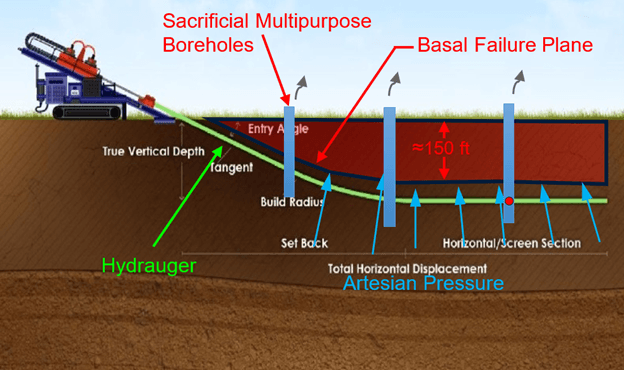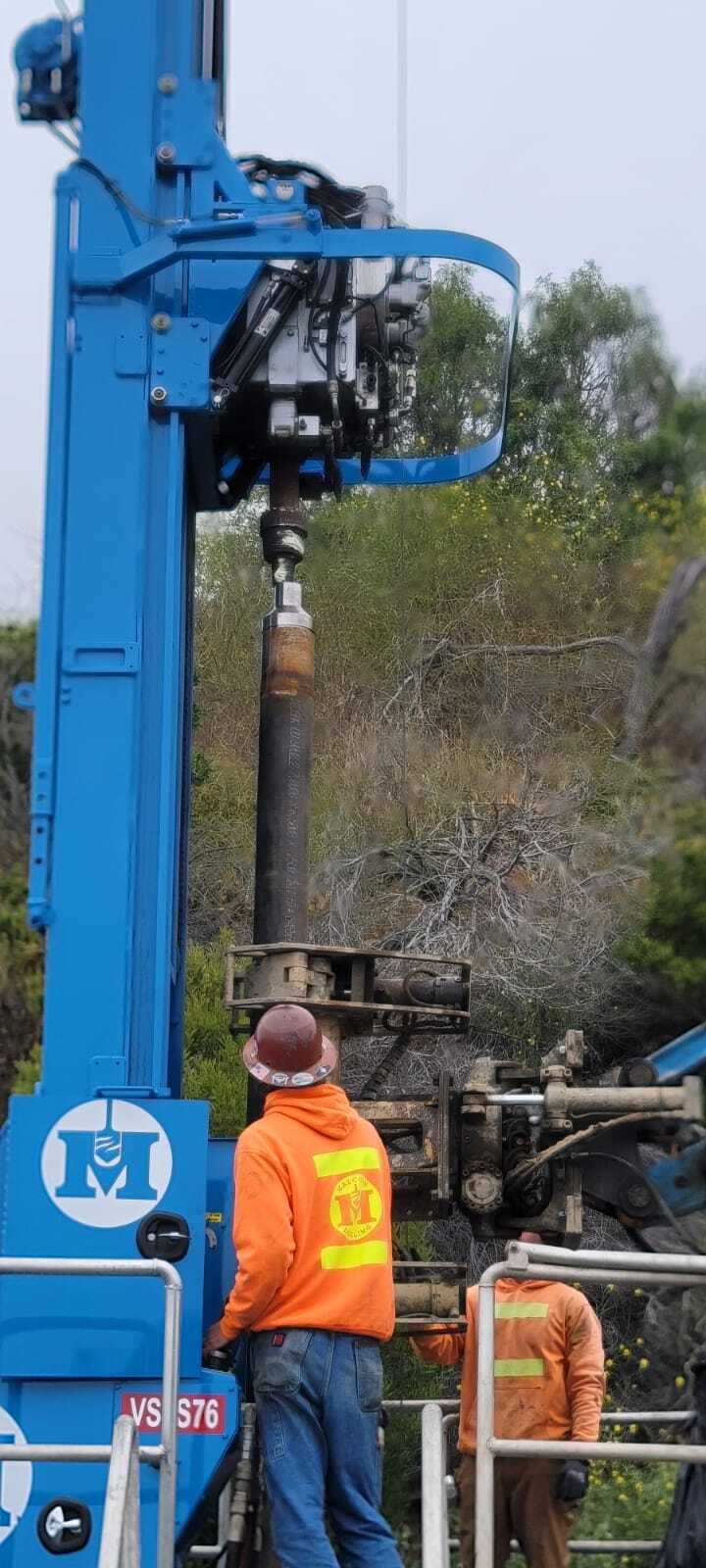Truth matters. Community matters. Your support makes both possible. LAist is one of the few places where news remains independent and free from political and corporate influence. Stand up for truth and for LAist. Make your year-end tax-deductible gift now.
With land moving 1 foot each week, Rancho Palos Verdes takes big step to try to slow dangerous landslide

Workers for the city of Rancho Palos Verdes have taken a big initial step in their efforts to manage a massive landslide that is now moving at rate of 1 foot a week and threatening a number of neighborhoods.
Two years of heavy rains have saturated the area and exacerbated the Portuguese Bend landslide. The hope is that over the next month, crews who have started drilling bore holes will be able to find where water has concentrated below ground so that they can begin to drain it.
"There's no expectation that it's going to cure the landslide and stop it altogether, but to be able to slow it to a manageable level is something that we're optimistic will happen," said David Copp, Rancho Palos Verdes' deputy director of public works.

The Palos Verdes Peninsula is landslide prone, in part because of a thick layer of volcanic ash that's morphed into impermeable clay called bentonite over millennia. The clay keeps water from draining through the steep hillsides, and can easily give out when wet, as particles struggle to stick together. The strength of the clay is even more compromised when you have a veritable bathtub of water pushing down on that slippery layer.
The vertical bore holes will be drilled 250 feet into the earth, after which hydraugers will be inserted horizontally to help drain the water. The hope is that the directional piping taken from the oil industry will be able to accommodate the land movement, unlike vertical holes, which are regularly sheered. Each hydrauger could take up to two months to install and it's unclear how long it'll be until some slow down is seen.
They're targeting both the top and the bottom of the slide. The top, because they hope it'll let them access water stuck in the bathtub, pushing down on the slide. The bottom, because they're concerned that there's water under pressure pushing up on the toe of the slide, making things substantially worse.

"We'll figure out once these test borings begin, what is actually the condition," said Mike Phipps, principal engineering geologist with Cotton Shires and Associates, which is contracting with Rancho Palos Verdes. "We really don't know because nobody really monitored the groundwater levels in the landslide for 20 years."
The land movement was just too much for the historic Wayfarers Chapel. The land was moving around seven inches a week for months. The only way to preserve it was to move it. The chapel was disassembled in May and moved to a temporary safe location.
It's unclear if mitigation efforts will slow the other two major landslides in the area — Abalone Cove and Klondike Canyon, the latter of which has already destroyed two homes. The three slides all seem to be moving in unison at the moment, leaving residents to worry every day whether their homes will be alright.








